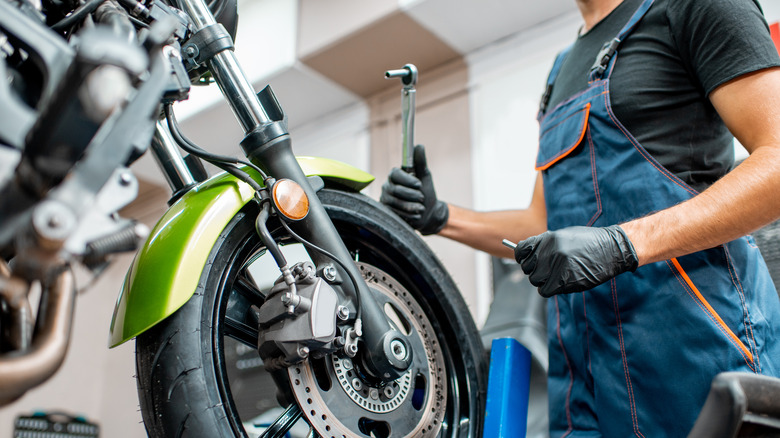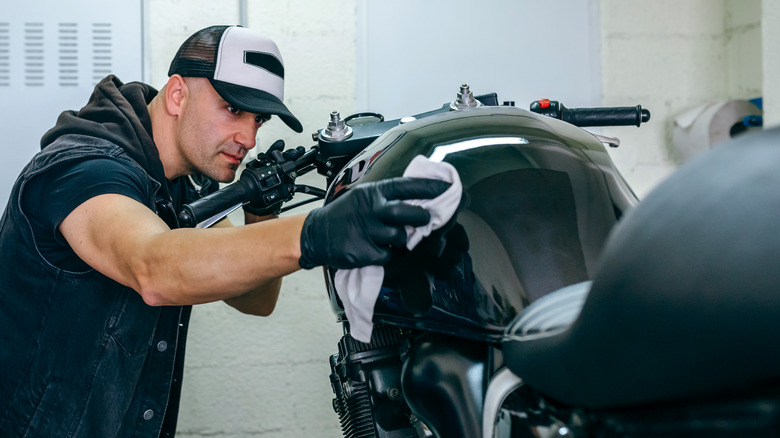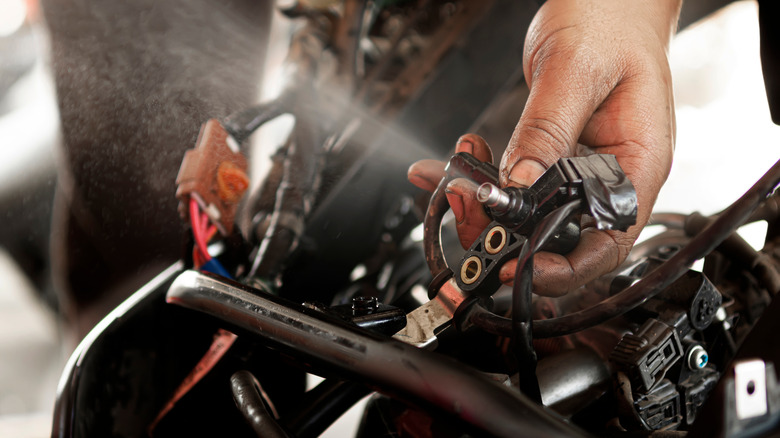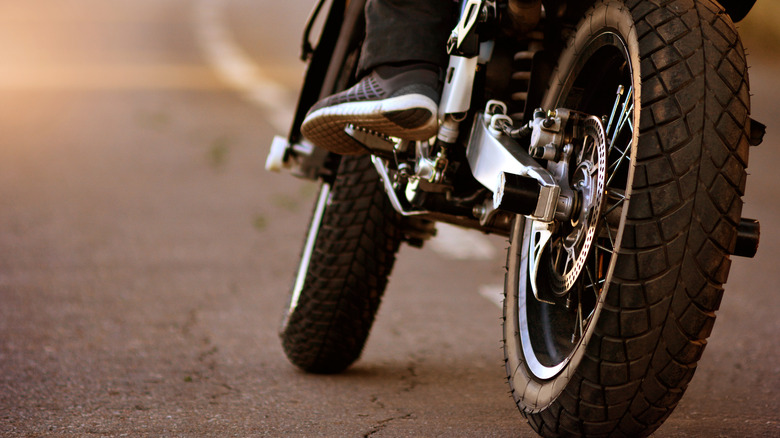5 Must-Know Tips For Motorcycle Maintenance
Melting snow and warmer weather marks the beginning of spring. It's also the perfect time to spruce up your motorcycle before hitting the open road, and this is especially true if you forget to winterize your beloved two-wheeled steed. Helpful tips like changing the oil and filters, filling the tank with a fuel stabilizer, and checking the tire pressures before storing your bike for winter will reap dividends when sunny weather arrives. It also gives you less to think about when doing the requisite walkaround before firing up that engine.
Moreover, preparing your bike for spring is the perfect time to catch up on maintenance requirements. For this, whip up your trusted service manual and check for oil and fluid change intervals, recommended tire pressures, chain or belt inspection, and when to replace the spark plugs and air filter, among many others. Remember that diligence goes a long way to keeping your motorcycle in tip-top shape all season. With that, we prepared a handy list of must-know motorcycle maintenance tips — a comprehensive rundown of the most important things to inspect before planning that road trip. The good news is it only takes an hour or two on a quiet weekend to ensure many miles of smiles on the open road.
Wash your bike
Washing your motorcycle is most important if you fail to do so before winter storage. Getting intimate with cleaning each part is also an excellent way to spot leaks, wear, cracks, or any loose or aging component. Next, check the moving parts and pivot points like the swingarm, suspension links, or kickstand, and re-apply lube, grease, or lubricant when necessary.
Before washing the bike, check the floor for leaks or fluid drips. Getting rid of standing dirt, gunk, or debris will allow you to trace the source of any leak more accurately. You may have to use a degreaser for extremely dirty or oily surfaces. The idea is to clean most surfaces while identifying potential failure points.
Check all fluids & filters
Your bike needs fresh fluids and filters to run more smoothly and dependably. We're talking about engine oil, gear oil, transmission fluid, brake fluid, coolant, and the necessary oil, air, and fuel filters. Refer to your motorcycle's service manual to determine when to replace the oil and air filter. If you have more than one motorcycle in the garage, the rule is to change the oil and engine coolant seasonally. It also depends on the type of engine oil.
Bike experts recommend changing the oil every 2,000 miles for mineral-based oil, 6,000 miles for semi-synthetic motor oil, and 8,000 miles for fully-synthetic oils. We recommend changing the oil and filter every 5,000 miles for seldom-used motorcycles. In addition, you should change the air and fuel filters at least every 25,000 miles. Of course, this assumes your motorcycle is powered by a gas engine and isn't an electric bike.
Check the wheels and tires, battery, and chain or belt
It's a common misconception that overinflating before storage would help the tires retain air and prevent flat spots. But, unfortunately, that's a myth: Revzilla says modern tires are more resistant to flat-spotting thanks to reformulated rubber compounds and fortified construction methods. You're better off inflating the tires to the recommended pressure using a quality tire gauge — before and after storage. Moreover, you should check the tires for hairline cracks, bald spots, or uneven wear. Finally, consider replacing the tires if the tread depth is less than 2mm or 3/32".
Batteries of all sorts won't last forever. So it's worth investing in a maintenance charger or battery tender to keep the battery fully charged and well-conditioned throughout winter. It also means one-click starts and a reliable electrical system. However, you should also check the battery age. Anything five years or older is a prime candidate for replacement. Also, it would help to take a few minutes to clean the battery terminals and apply dielectric grease to ward off corrosion.
Place your bike on a lift or stand, grab the wheels, and shake from side to side. If you detect excessive play, it could be time to replace the wheel bearings. Next, spin the rear wheel and look at the drive chain or belt. Consider replacing the chain if you notice excessive sprocket wear, binding, or seizing, and look for signs of unusual wear, cracking, or missing teeth on the belt drive when necessary. It's a good idea to double-check the chain alignment or the belt tension as well before setting off. Finally, don't forget to reapply some chain lube after cleaning.



